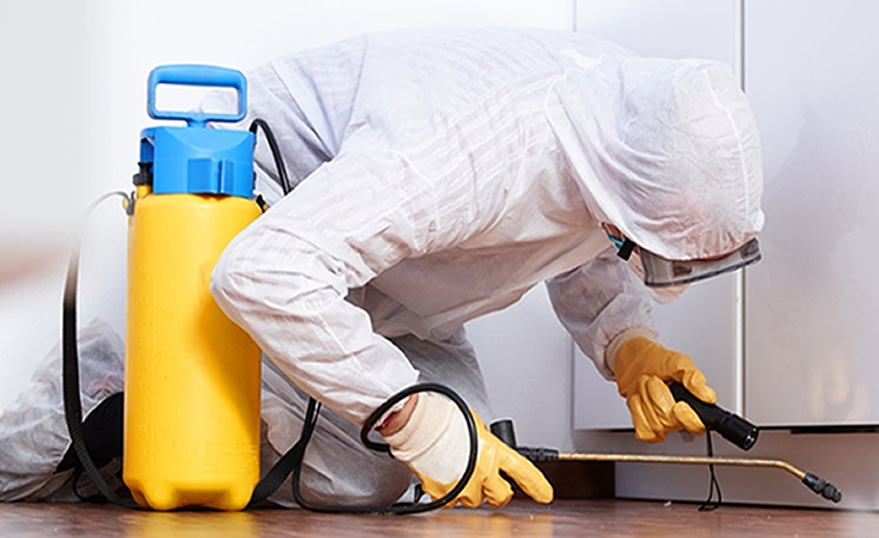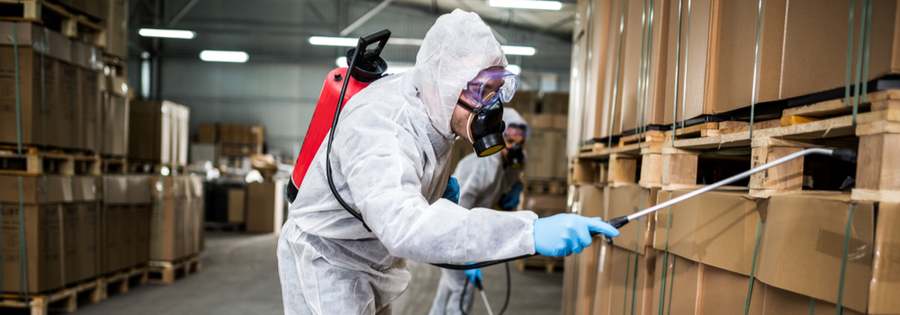Bed Bug Dog Detection: Spot Infestations Early for Assurance!
Bed Bug Dog Detection: Spot Infestations Early for Assurance!
Blog Article
Expert Parasite Control Techniques for Long-Term Outcomes
Expert parasite control methods envelop an extensive approach that begins with a detailed evaluation and analysis, followed by exact pest identification to recognize their behavior patterns. The application of Integrated Pest Administration (IPM) principles, coupled with eco-conscious treatments, creates the cornerstone of sustainable bug eradication.
Assessment and Analysis
Upon entering a property for insect control solutions, the first step is a complete examination and assessment to identify the degree of the invasion and establish one of the most effective treatment plan. Expert bug control technicians are trained to carefully take a look at the properties, seeking indicators of pest activity such as droppings, nibble marks, nests, or any type of structural damage. They will likewise evaluate the conditions that might be bring in parasites, such as food resources, water leaks, or entry points.

Pest Recognition and Habits

In addition, understanding the behavior of the identified bug is vital to applying effective control steps. For example, understanding where bugs nest, what they prey on, and their task patterns can aid pest control professionals devise techniques to eliminate them effectively. Some parasites might be nighttime, while others are a lot more energetic throughout the day. This understanding enables the application of therapies at ideal times for maximum efficiency.
Integrated Bug Administration (IPM)
Integrated Pest Management (IPM) approaches integrate multiple techniques to regulate and stop pest problems in a lasting and ecologically friendly fashion. bed bug exterminator. By integrating approaches such as organic control, habitat adjustment, adjustment of social methods, and making use of immune varieties, IPM intends to reduce the use of chemical pesticides
Among the essential concepts of IPM is the emphasis on avoidance. This positive strategy includes monitoring bug populations consistently to discover any prospective issues prior to they intensify. By recognizing parasite issues early on, pest control procedures can be implemented quickly and efficiently.
Furthermore, IPM advertises the use of safe pest control techniques whenever feasible. This can consist of using natural killers of the insects, presenting useful insects, or making use Exterminator DC of pheromones to interfere with mating patterns. By minimizing dependence on chemical pesticides, IPM not only secures the setting however additionally helps keep a balance in the ecological community.
Environmentally-Friendly Treatments
Applying eco-conscious techniques in pest control treatments can efficiently resolve infestations while focusing on environmental sustainability. Environmentally-friendly treatments concentrate on minimizing the effect of parasite control methods on communities, non-target microorganisms, and human wellness. These approaches frequently include making use of all-natural killers, such as ladybugs or nematodes, to regulate pest populaces, lowering the requirement for chemical interventions. Furthermore, strategies like habitat control, such as changing wetness levels or eliminating food sources, can help discourage insects without making use of damaging compounds.
Another key facet of environmentally-friendly therapies is making use of natural and naturally degradable products that damage down promptly without leaving unsafe deposits in the setting. Organic insecticides originated from plants like chrysanthemums or neem offer reliable insect control while positioning minimal threat to non-target types. Moreover, employing techniques like warmth treatments or scent traps can target particular pests with accuracy, decreasing the total ecological effect of insect control practices.
Continuous Monitoring and Maintenance
Routine evaluations by skilled experts are needed to recognize any kind of indicators of bug task, examine the efficiency of previous treatments, and make modifications to the insect control plan as needed. By keeping track of insect populations over time, insect control professionals can track patterns, expect prospective problems, and execute precautionary steps to reduce the danger of future infestations.
In enhancement to tracking, maintenance techniques are essential for long-term parasite control success. This includes implementing appropriate sanitation procedures to eliminate possible food and water sources for bugs, sealing off access points to stop pests from getting in the premises, and attending to any structural concerns that could promote pest invasions (pest control near me). By incorporating continuous surveillance and maintenance into an incorporated pest administration approach, businesses can guarantee a pest-free setting and safeguard their residential property versus costly damage and health and wellness threats
Verdict
Finally, using expert bug control strategies such as extensive assessment and analysis, exact parasite recognition and understanding of their habits, incorporated bug administration strategies, environmentally-friendly treatments, and continuous monitoring and maintenance are vital for accomplishing long-term results in pest control. By applying these techniques, individuals can effectively manage insect invasions and maintain a pest-free setting in a sustainable way.
Report this page